Histoire du Cerf-Volant - Kite History |
De 400 ans avant J.-C. à nos jours - 400 years BC to the present day |
Légendes et Réalités Legends and realities 202 av JC – 1750 |
||||||||
Légendes et Réalités - Legends and realities 202 av JC – 1750 |
| L'origine du cerf-volant reste encore aujourd'hui incertaine. Mais dès son origine le cerf-volant a été utilisé dans les domaines militaires et scientifiques. The true origin of the kite still remains obscure to this day. But from its earliest days, the kite has been used in both military and scientific fields. |
Origine Grecque Une opinion assez commune veut que l'inventeur du cerf-volant ne soit autre que le célèbre philosophe grec Archytas de Tarente (4 siècles avant notre ère). Mais aucun texte formel permet de l'affirmer, à moins que la fameuse colombe mécanique, dont on lui attribue la construction, n'ai été qu'un simple cerf-volant. La représentation du cerf-volant ne figure sur aucune espèce de monument antique, grec ou romain. De plus le mot "Cerf-volant" n'existe ni en grec ni en latin. Le cerf-volant était donc très certainement inconnu de ces peuples. (extrait :"Les cerfs-volants" J. Lecornu - 1910) Greek origin |
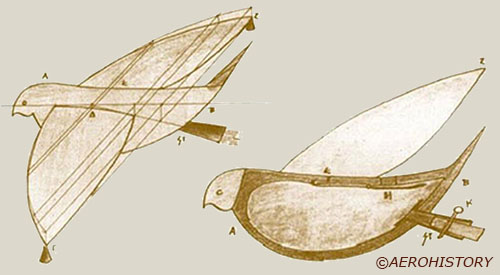 |
|
Some think that the inventor of the kite is the famous Greek philosopher Archytas de Tarente (4 centuries B.C.). But no text confirms it, unless the famous mechanical dove, whose construction is attributed to him, is simply a kite. The representation of the kite is not reproduced on any ancient monument, Greek or Roman. Moreover the word "kite" exists neither in Latin nor Greek. The kite was thus doubtless unknown to these people. (extract :"Les cerfs-volants" J. Lecornu - 1910) |
|
| Origine Chinoise
Les historiens chinois pensent que le véritable inventeur du cerf-volant est un général nommé Han-Sin, qui vivait 206 ans avant notre ère. Il l'aurait imaginé dans le but de faire communiquer une ville assiégée (et son Palais de Wei-Yang-Yong), avec les troupes de renfort. Cependant, en se reportant à l'ouvrage intitulé "Tching-Tchaî-Tsa-Ki", il semble que ce général chinois se serait servi d'un appareil (le cerf-volant) connu depuis déjà longtemps. En Chine, en 549, le roi Wu Liang, prisonnier du général Heou-King, a l'idée d'accrocher à un cerf-volant des lettres pour raconter sa mésaventure. L'armée du général, qui découvrit cette ruse, préféra fuir que d'affronter les renforts ainsi appelés. Toujours en Chine, et d'après une autre légende, un général utilisait fréquemment un cerf-volant comme messagerie pour rassembler ses troupes qui travaillaient comme paysans dans les champs. |
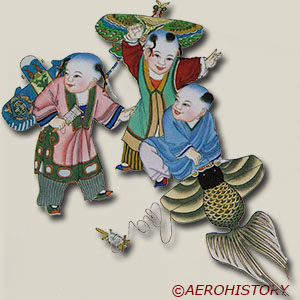 |
| Chinese origin |
| The Chinese historians think that the true inventor of the kite is a General named Han-Sin, which lived 206 years B.C. He would have created it to allow communication between a besieged city (the castle of Wei-Yang-Yong) and reinforcement troops. However, according to the book entitled "Tching-Tchaî-Tsa-Ki", this Chinese General could have been using an apparatus (the kite) already known for a long time. | ||
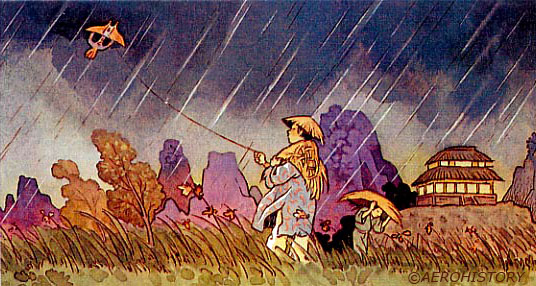 |
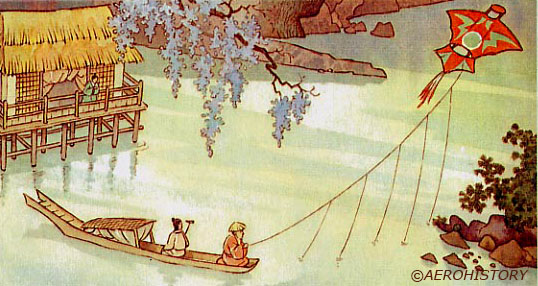 |
|
| In China, in 549, king Wu Liang, prisoner of the General Heou-King, hung letters on a kite to tell of his mishap. Discovering this trick, the army of the General prefers to flee than to face the summoned reinforcements. Still in China, according to another legend, a General frequently used a kite as a signal to gather his troops who worked as peasants in the fields. |
||
Origine Japonaise L'apparition du cerf-volant au Japon daterait du IX° siècle. Un autre récit retrace la fabuleuse aventure de cet intrépide brigand qui, pour dérober un dauphin d'or sur le toit du temple de Nagoya, se fit porter et déposer par un grand cerf-volant. Mais il fut capturé et jeté dans de l'huile bouillante. Au début, seuls les samouraïs aisés pouvaient construire des cerfs-volants en papier et bambous. En effet le papier était cher. Plus tard le cerf-volant devient plus populaire grâce à de nouvelles techniques de fabrication du papier moins coûteuses. Un dictionnaire japonais daté de 981 après JC fut le premier à enregistrer le mot japonais pour cerf-volant et utilisa les caractères pour "Kami Tobi" qui signifie "faucon en papier" - ce qui suggère que les premiers cerfs-volants étaient en forme d'oiseau. |
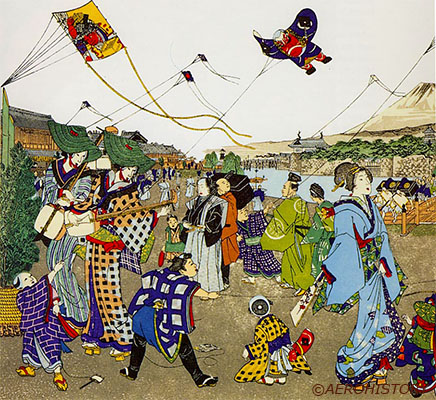 |
| Japanese origin | |
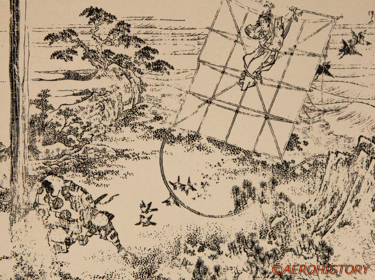 |
The beginning of kites in Japan would date from the 9th century. In the legend, the great warrior Minamoto-no-Tametomo was exiled on an island. He built an immense kite on which he lashed his son and lets him escape from the island by crossing the sea. Tametomo is also known in the epic chronicles as a powerful archer and it is said that he once sunk an entire Taira ship with a single arrow by puncturing its hull below the waterline. Another account recalls the fabulous adventure of an intrepid brigand. To steal a gold dolphin from the roof of the temple of Nagoya. He is carried to the roof by a large kite. But he is captured and thrown in boiling oil. At the beginning, only the wealthy samurais could build paper and bamboo kites. Indeed, paper was expensive. Later the kite becomes more popular, thanks to new less expensive techniques for manufacturing paper. A Japanese dictionary dated 981 AD was the first to record the Japanese word for kite and used the characters for "Kami Tobi" meaning paper hawk - which suggests that the first kites were bird shaped. |
Le cerf-volant prend le large Alors qu'il est envoyé à Gênes comme prisonnier de guerre, Marco Polo raconte ses aventures à ses compagnons de captivité. Les récits qu'il fait à Rusticello de Pise, son compagnon de détention, permirent à ce dernier de rédiger en français le récit de son voyage qui dura environ 24 ans. Rusticelo, un érudit, les relate dans le "Millione" (" Les merveilles du Monde ") : Son œuvre importante est un récit poétique qui témoigne de l’âge des premières explorations géographiques. Il décrit de façon émerveillée, les richesses et les enchantements des traditions et coutumes asiatiques. Cet ouvrage apporta à l'Europe la première documentation, tant géographique qu'ethnographique, sur les pays et les peuples d'Asie. |
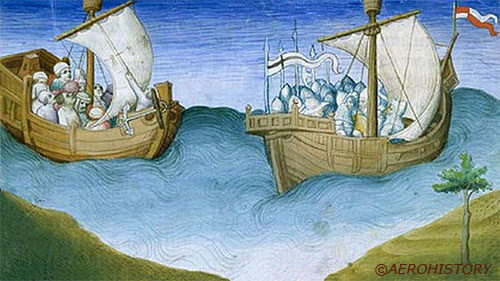 |
|
 |
The kite takes to the open sea Marco Polo was a prisoner of war in Geneva where he tells of his adventures to his fellow prisoners. The stories he told Rusticello of Pisa, his fellow prisoner, allowed him to write in French the story of his journey which lasted about 24 years.
His important work is a poetic narrative that bears witness to the age of the first geographical explorations. He describes with wonder the riches and enchantments of Asian traditions and customs. This book brought to Europe the first documentation, both geographical and ethnographic, on the countries and peoples of Asia. |
|
| Les machines volantes | ||
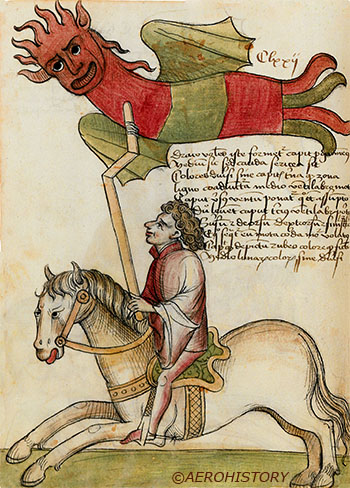 |
||
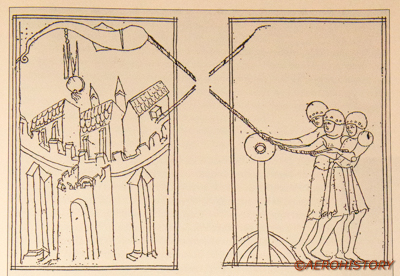 |
Au 13éme siècle, le philosophe et savant anglais Roger Bacon, mena des études sur les machines volantes, qui le conduisirent à la conclusion suivante : L'air devrait pouvoir supporter un appareil, tout comme l'eau supporte les bateaux. En France, des illustrations montrent des sortes de manche à air, porteur de bombes, pour effrayer l'ennemi dans le " Nobilitatibus " de Walter Milemete (1346). La forme des premières manches à air évoluera au fil du temps pour ressembler par la suite à un long cerf-volant plat (1430, Recueil de machines de Konrad Kyesser). Ce dragon volant se répand dans toute l'Europe. |
|
Flying machines 13th century English philosopher Roger Bacon, studies flying machines. He concludes: The air must be able to support an apparatus, just like water supports boats. In France, in the "Nobilitatibus" of Walter Milemete, the illustrations show kinds of wind socks carrying bombs to frighten the enemy (1346), (sketch to the right). The form of the first wind socks will evolve to finally resemble a long flat kite (1430, "Recueil de machines" of Konrad Kyesser), This flying dragon spreads all over Europe (sketch to the left) |
||
|
Pétards et feux d'artifice Durant la seconde moitié du 16e siècle, l'Allemand Johann Schmidlop (1560) et l'Italien Della Porta (1589) utilisent les cerfs-volants pour transporter des feux d'artifice. L'Anglais John Bate (1635) reprendra leur idée dans son livre : " The Mystery of Nature and Art ". John Bate décrit en détail comment construire et utiliser un modèle pour y attacher pétards et feux d'artifices.
Crackers and fireworks During the second half of the 16th century, the German Johann Schmidlop (1560) and the Italian Della Porta (1589) use kites to carry fireworks. The English John Bate, in 1635, will take up their idea in his book : "The Mystery of Nature and Art". Bate describes in detail how to build and use a model to attach fire crackers and fireworks to it. |
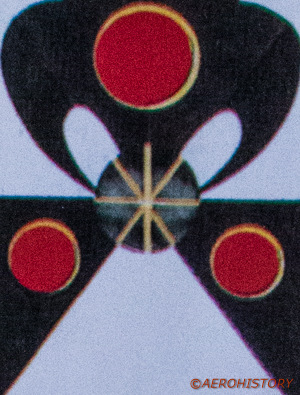 |
Messages par cerf-volant Lors de l'invasion des Japonais en Corée, le général Chungnugong, communique avec ses troupes à l'aide de cerfs-volants dont les motifs (forme et couleur) sont des informations et messages codés lancés à ses troupes. Ordre d'envoyer des renforts (photo de gauche) Ordre d'attaquer dans toutes les directions pendant la nuit (photo de droite) Messages by kite During the Japanese invasion of Korea. General Chungnugong communicates with his troops using kites whose motifs (shape and colour) are information and coded messages sent to his troops. Order to send the reinforcements (picture on left) Order to attack in all the directions during the night (picture on right) |
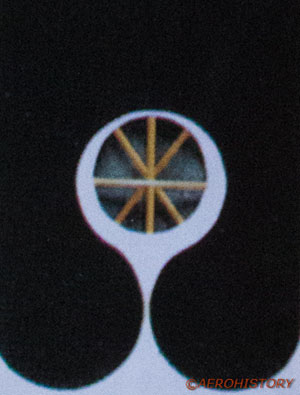 |
Légendes et Réalités Legends and realities 202 av JC – 1750 |
||||||||